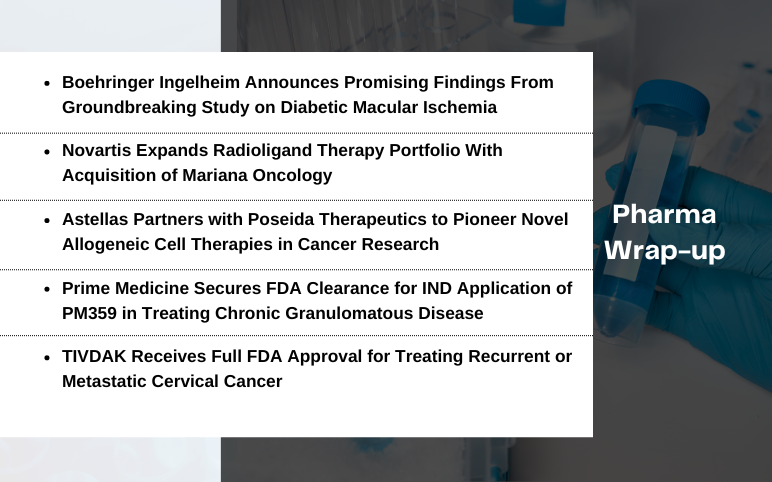Over the past few decades, the eye-related problem has increased owing to various factors such as population growth, aging, and the rise in the prevalence of diseases such as diabetes mellitus that directly affect the eyes. It is observed that vision loss can affect people of all ages however it is more common in people over the age of 50 years. Some of the eye problems develop and go away on their own with time, or sometimes it requires special care and attention. The early detection of vision problems plays a significant role in preserving eyesight. However, people from low-income groups, rural areas, older people, and ethnic minorities are widely affected as compared to other groups, mainly due to a lack of essential services and awareness.
Through this article, we have covered some of the most common global causes of blindness due to eye diseases and uncorrected refractive error, which are as follows –
Refractive Errors
The Refractive error is one of the leading eye problems, it occurs when the shape of the eye does not bend light correctly which results in a blurred image. The main causes of the Refractive Errors are the change in the length of the eyeball (longer or shorter) or the shape of the cornea, and the aging of the lens. It has the following types namely myopia (nearsightedness), hyperopia (farsightedness), presbyopia (loss of near vision with age), and astigmatism (focus problems caused by the cornea). The rise in the overall population is one of the major reasons for the increase in the prevalence of Refractive Errors. The chance for Refractive Errors also increases if the family members wear glasses or contact lenses.
As per the 2010 US Census population estimate, “approximately 63% of the adults over the age of 40 in the United States experienced vision problems attributable to vision impairment, blindness, refractive error (i.e., myopia and hyperopia), and others”. As per DelveInsight’s analysis, the number of prevalent presbyopia cases in the United States was 117,369,699 in 2020. Among the EU5 countries, the total prevalent presbyopia cases were 134,726,460.
Corrective lenses (or spherical lenses), such as eyeglasses or contact lenses are generally used to correct Refractive Disorders such as Myopia, Hyperopia, Astigmatism. In some cases, Refractive surgery (such as LASIK) can also be recommended for the correction of Refractive Errors. However, surgical options are not widely accepted due to several limitations. At present some of the key players such as Allergan (AbbVie), Novartis, Eyenovia, AbbVie, and others are developing drugs for refractory errors. Several therapies are in the developmental stages which are expected to launch in the coming years.
Age-Related Macular Degeneration
Age-related macular degeneration (AMD) blurs the sharp, central vision of the eye where the sharpest vision occurs. AMD is a leading cause of vision loss in people 50 years or older and with time it gets worse. It severely affects daily activities such as recognizing faces, sewing, cooking, driving, reading, and many other such activities.
As per the WHO, “Age-related Macular Degeneration is responsible for 8.7% of all blindness (3 million persons) due to eye diseases, ranging from close to 0% in sub-Saharan Africa to 50% in industrialized countries”. Dry and wet are the common forms of Age-Related Macular Degeneration. Dry AMD is a result of the macula getting thinner with age and the small yellow deposition of a protein called drusen under the retina while in the Wet AMD tiny new blood vessels grow under and into the retina. It is observed that nearly 80% (i.e. 8 out of 10) of people are affected by dry AMD. Apart from age, the family history of AMD, high cholesterol, heart disease, overweight, and a diet with high saturated fat are the common risk factors for Age-Related Macular Degeneration.
The combination of nutritional supplements such as Vitamin C, Vitamin E, Lutein, Zeaxanthin, Zinc, etc. is beneficial for Dry AMD. While for the wet AMD, Anti-VEGF drugs such as Avastin, Lucentis, and Eylea are used for treatment. The Anti-VEGF treatment reduces the number of abnormal blood vessels in the retina. The treatment is effective only if the condition is detected early. In some cases, laser surgery is also recommended to treat some types of wet AMD. At present some of the key players in the Age-Related Macular Degeneration market include Graybug Vision, Kodiak Sciences Inc., Adverum Biotechnologies, Inc., Lineage Cell Therapeutics, Inc., Amgen, and others.
Cataract
A Cataract is the clouding of the normally clear lens due to the proteins in the eye. It results in blurry vision, extra sensitivity to light, double image formation, and some other problems. The age is one of the most common risk factors for the Cataract while in children genetic disorder is also a major reason. Similarly, other risk factors include injury, certain eye diseases (e.g. uveitis), diabetes, ultraviolet irradiation, and smoking.
As per the WHO, “there are estimated to be almost 18 million people who are bilaterally blind from cataract, representing almost half of all causes of blindness due to eye diseases globally”. In the USA, over 24.4 million people (which is nearly 17% of the U.S. population) age 40 and older, or about one in every six people in this age range are affected by Cataracts. By age 80, more than half of the people are observed to be affected by Cataracts. It is estimated that by the year 2050, around 50 million Americans will develop cataracts.
To correct the Cataract, surgery is performed to overcome the blurry vision. Cataract surgery involves the removal of the lens from the eye and is replaced with an artificial lens. At present several companies are active in the Cataract Surgery Devices market. Some of the key companies include Johnson & Johnson, Novartis AG, Carl Zeiss Meditec AG, Essilor International S.A., HAAG-Streit Holding AG, Nidek Co., Ltd., Topcon Corporation, Valeant Pharmaceuticals International Inc., Ziemer Ophthalmic Systems AG, and others.
Laser cataract surgery is one of the new techniques introduced in the market in recent times and is expected to enhance the accuracy of steps during cataract surgery. Recently the FDA has also approved a large number of femtosecond lasers for cataract surgery in the USA. As per DelveInsight, the Cataract market is expected to observe significant growth due to the increase in the prevalence of cataract disorders, the increasing geriatric population, and technical developments in ophthalmic products. However, the high costs associated with cataract surgery, particularly in developing economies will hamper market growth.
Diabetic Retinopathy
Diabetic retinopathy may occur in people who have diabetes and often result in vision loss and blindness. Age is another major risk factor for the development of Diabetic Retinopathy and the working-age population is the most affected group. Similarly, it is slightly more prominent in males in comparison to females.
As per the WHO, “Diabetic retinopathy is responsible for 4.8% of the 37 million cases of blindness due to eye diseases throughout the world (i.e. 1.8 million persons)”. A significant population worldwide is affected by diabetes, as per the estimates, the case of Diabetic retinopathy is likely to escalate in the coming years with the increase in the diabetes population. In the 7MM, the total diagnosed prevalent population of Diabetic Retinopathy was estimated to be 8,033,083 in 2020. Among the 7MM, the US accounted for the highest diagnosed prevalence. In the EU5 countries, Germany had the highest population of Diabetic Retinopathy with 2,167,200 cases, followed by Italy, while France had the lowest prevalent population in 2020.
The Diabetic Retinopathy market is marked with several unmet needs. To provide holistic care to patients, there is a need for novel diagnostic tools, novel pathways to address the underlying cause of the disease, and timely diagnosis is also equally important. To fulfill the therapeutics need, some of the major pharmaceutical companies at the global level are diligently working towards the development of therapies for Diabetic Retinopathy. The key companies include Novartis Pharmaceuticals, Roche, Adverum Biotechnologies, Kubota Vision, and KalVista Pharmaceuticals, and others. Most of the products are in the late phase of clinical development and are expected to hit the market in the near future.
Glaucoma
Glaucoma is an eye condition that occurs due to damages to the eye’s optic nerve and results in vision loss and blindness. It is a result of fluid builds up in the front part of your eye which leads to an increase in the pressure in the eyes. Being old, family history of glaucoma, diabetes and people from a certain ethnic group are the high-risk category for Glaucoma. Similarly, women are also at higher risk. As per the Glaucoma Data and Statistics by National Eye Institute, “women are more likely than men to develop age-related eye diseases such as Glaucoma. Women account for 61% of glaucoma cases in the US”.
Worldwide, nearly 4.5 million people are blind due to Glaucoma. In 2020, the total prevalent population of Glaucoma in 7MM was 10,104,188. According to DelveInsight’s analysis, there were 2,967,468 cases of OAG in the US in 2020. There are certain challenges related to Glaucomas such as lack of awareness, late diagnosis, and absence of necessary equipment which contributes significantly to the growing burden of this eye disorder.
There are three mainstays for lowering eye pressure, i.e. medication, laser, and surgery. The Glaucoma treatment aims to reduce the IOP to preserve visual function. The IOP reduction medication requires to be least interrupting with a patient’s life, should be highly tolerable, and also simple to follow. However, at present, Glaucoma medications are associated with side effects, complications, and high costs. To overcome these challenges, some of the key pharmaceutical companies are working toward the development of novel products for Glaucoma, which includes Sun Pharma Advanced Research Company (SPARC) Limited, Laboratorios Sophia S.A de C.V., Nicox Ophthalmics, etc. At present, several Glaucoma therapies are in the late and mid-clinical development stages. The therapies are expected to launch in the coming years and hold the potential to change the Glaucoma treatment market landscape.
Way ahead
The eye disorder possesses a significant personal and economic burden. At the personal level, it causes extreme suffering, physical pain, productivity losses, and in some cases, premature death is also possible. The cost associated with the treatment of eye diseases includes the costs for pharmaceuticals, routine eye examinations, aids, equipment, home modifications, rehabilitation, welfare payments, lost taxation revenue, and many others. At the economic front, as per the WHO, “the annual global costs of productivity losses associated with vision impairment from uncorrected myopia and presbyopia alone were estimated to be US$ 244 billion and US$ 25.4 billion, respectively”. If the burden of other eye disorders is combined it would be much higher. Similarly, as per John S. Wittenborn et. al., “the total economic burden of eye disorders and vision loss in the United States in 2013 is $139 billion. This includes $65 billion in direct medical costs due to eye disorders and low vision”.
To overcome the burden of eye disorder and vision impairment, WHO in coordination with the local government is continuously working to improve the delivery of eye care services particularly at the primary health care. Along with it also focussing on strengthening the eye care workforce and information systems for eye care. In the coming years, the launch of emerging therapies and devices, improvement in diagnostics techniques, and rise in healthcare spending will improve the situation for the people affected by eye diseases. Similarly, the increased Research and Development activities and the introduction of Gene Therapy for some eye disorders will also provide a new dimension to the eye disorder treatment market. Despite all these initiatives, the lack of resources and affordability of the treatment especially in the developing and low economic countries will remain a key concern to address.



